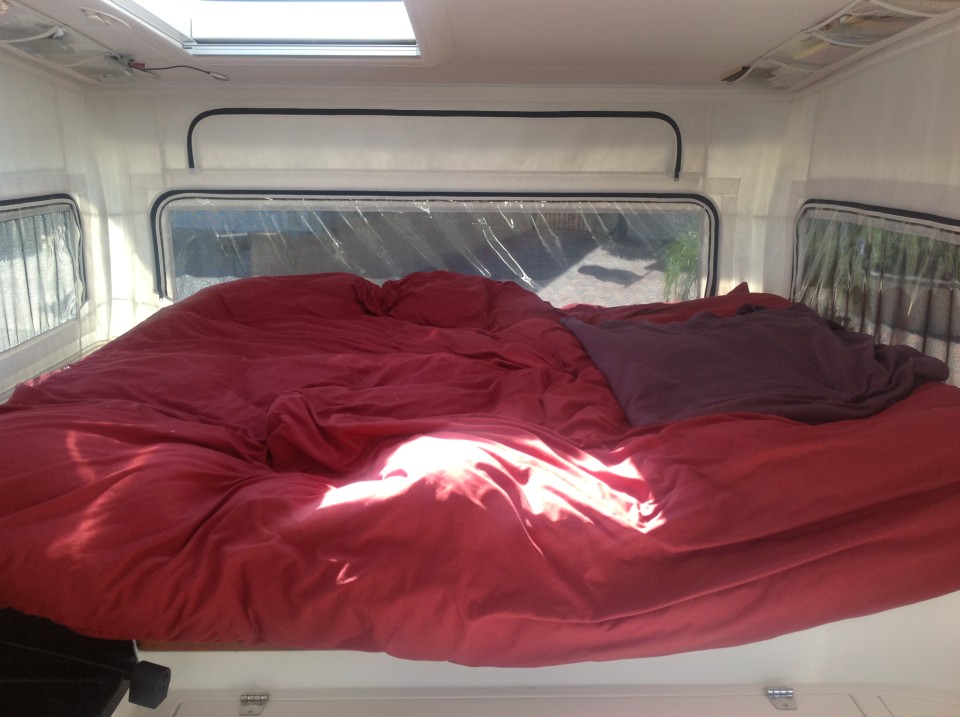We’ve been living in the XPCamper for two months now, and we’ve put over 7,000 miles on our truck. So, how’s everything working out so far?
Diesel Powered Stove & Heater
The stove, heater, and water heater in the XPCamper run on diesel fuel. There is a 3.5 gallon fuel tank in the back of the XP (it isn’t connected to the diesel tank on the truck) that feeds these appliances. We use our stove nearly every day. In the morning we make coffee, and in the evening we cook dinners.
We haven’t used the heater much because we’ve found that even in the cooler weather (coldest we’ve experienced so far is mid 30s/low 40s), we’re still warm in the XP. On the coldest nights, we’ve put the heater into “winterize” mode, which will ensure that nothing freezes. We recently used this in Escalante, Utah. It had snowed the day before when we hiked Bryce Canyon, so it was pretty cold. The next morning, we were pleased to wake to a warm camper and warm water. However, mainly, we have used the heater to heat water for showers. It’s been great to be out hiking all day and know that we can return and shower before hopping into bed.
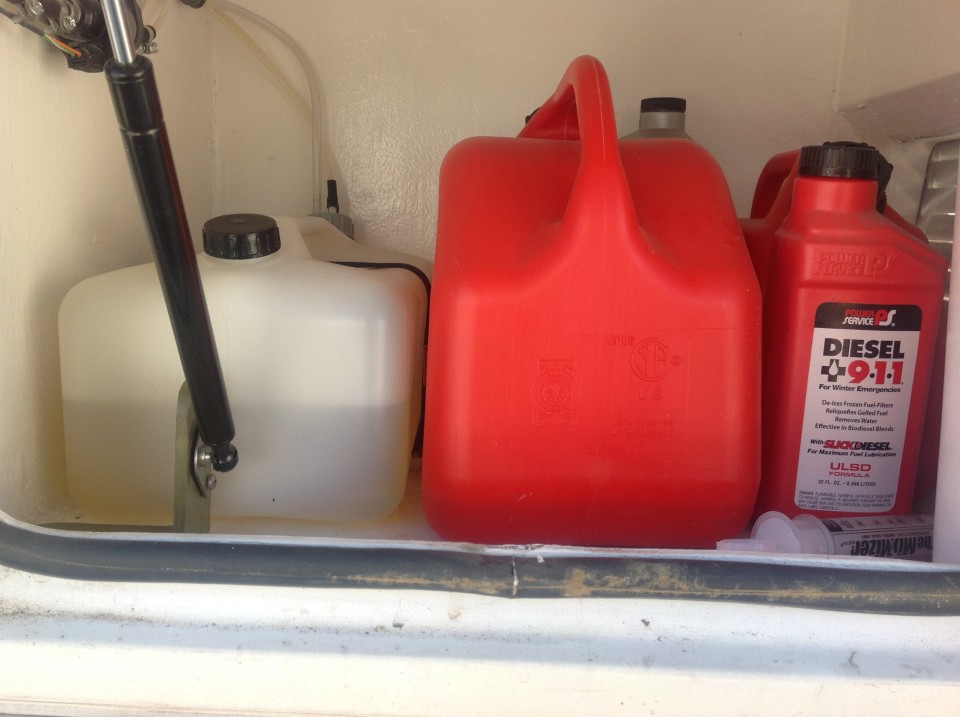
The 3.5 gallon gas tank on the left feeds the heater and stove. As you can see, after 5 weeks of constant use, we’ve used about half the fuel (1.75 gallons).
Power
Our XPCamper has two 6-volt lifeline batteries that provide power (there is an option to add two more). Fully charged, they can hold 300 amp-hours worth of power. Our truck has an automatic charging relay, so these batteries are charged whenever the truck is running. In addition, there are two 155-watt solar panels installed on the roof of our camper (solar panels are constantly improving; XPCamper now comes with 160-watt solar panels). We have a plug for shore power, but we haven’t had the need to use it yet. This saves us money when we camp in “real” campgrounds–we have found that “tent” sites (no water or power) are typically about half the cost of sites with hookups.
According to the manufacturer’s website, each solar panel can generate about 8.86 amps at it’s peak. On sunny days I have definitely seen the solar power monitor reporting 15+ amps of power being generated, but typically this varies quite a bit based on how cloudy it is.
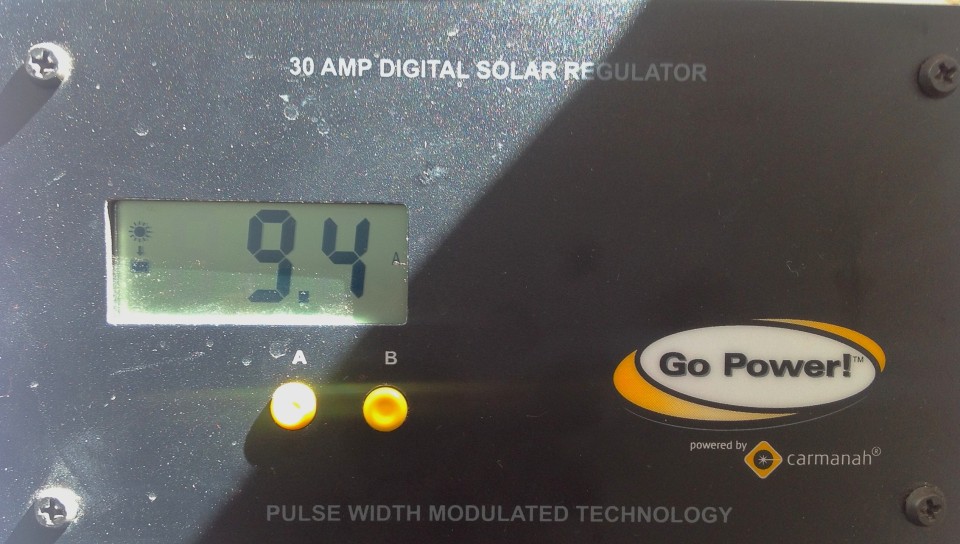
It was a sunny day and the battery was already topped off. This shows 9.4 amps being generated by our solar system after I turned on all the lights, the two fans, and the refrigerator in our camper.
We have been in some really rainy weather and have found that power usually isn’t an issue for 48 hours or more without sun. If we see that we are headed towards several days of rain, we try to conserve power as much as possible. We haven’t really had to worry because we could always run the truck for a while to regenerate power if necessary.
In Denali, we had 3 straight days of rain, and at Glacier our campsite was surrounding by towering trees that didn’t allow any sunlight to reach the XP, and we didn’t have any trouble at either spot. When we took a ferry from Haines to Juneau, the rig was out of the sun for 48 hours. During this time it was running our two refrigerators, and the battery still had plenty of juice when we rolled off in Juneau.
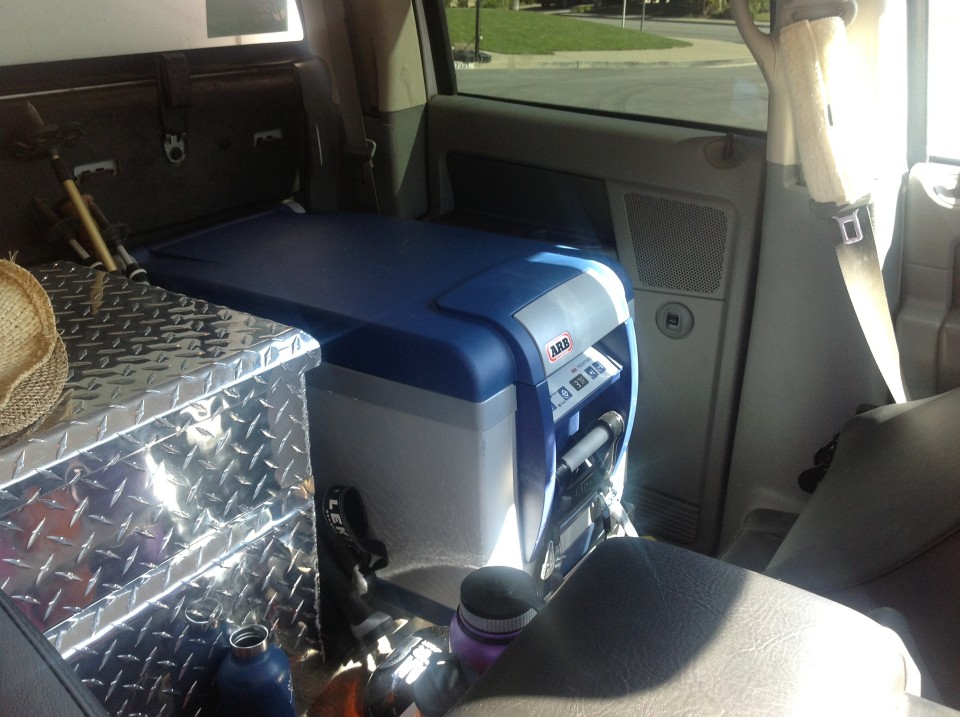
We added a second ARB refrigerator/freezer right behind the driver’s seat. Marc and his team at XPCamper made a mount that holds it secure and did the install.
We have a 2000 watt inverter that allows us to run power hungry appliances. We have a blender that we use to make soups and smoothies. We also have a small bread maker that makes 1-pound loafs of bread. Otherwise, we also use the inverter for things like our laptops, and some hair clippers Erica uses to give me hair cuts.
Water
We have a 70 gallon fresh water tank. We’ve never filled it the entire way, mostly because it’s been so easy to find water in the USA and Canada, and we figure we don’t need all the extra weight. As we head across the border, we’ll probably stockpile more water. I’m not sure how/where we will fill the water tank in Mexico — expect a future post when we figure it out!
We have a 3M water filter that all water from the fresh water tank is run through, and we’ve bought a steri-pen as an additional precaution for drinking water. Again, most of this will be put to the test as we head into Mexico, so we’ll be sure to update the blog as we figure these things out.

Our 3M water filter can supposedly filter 7500 gallons of water. That is over 100 refills of our fresh water tank!
Bed
The bed in the XP is a combination of a Froli box spring mattress and a special pad that is built for a boat (resistant to mold and other things you’d find in a boat cabin). We slept on the bed for 6 weeks and decided that it was a bit too firm for us. We decided to add a tempur-pedic topper to the mattress to make it softer.
We were shopping in Costco somewhere in Oregon and bought a 3″ memory foam topper. I should have known this would be too much. I could barely lift this into our shopping cart. We enjoyed one amazing night of the softest bed on earth before we decided to return it. It was far too heavy and the thickness would cause issues when closing the XP.
Our second effort resulted in a cheaper 1.5″ memory foam topper that we bought at Walmart. This is much lighter weight and cheaper than the Costco topper, but we totally love it. It is light enough that we can still access the storage area under the bed without issue, but it is soft enough that we no longer miss our old mattress that we had at home.
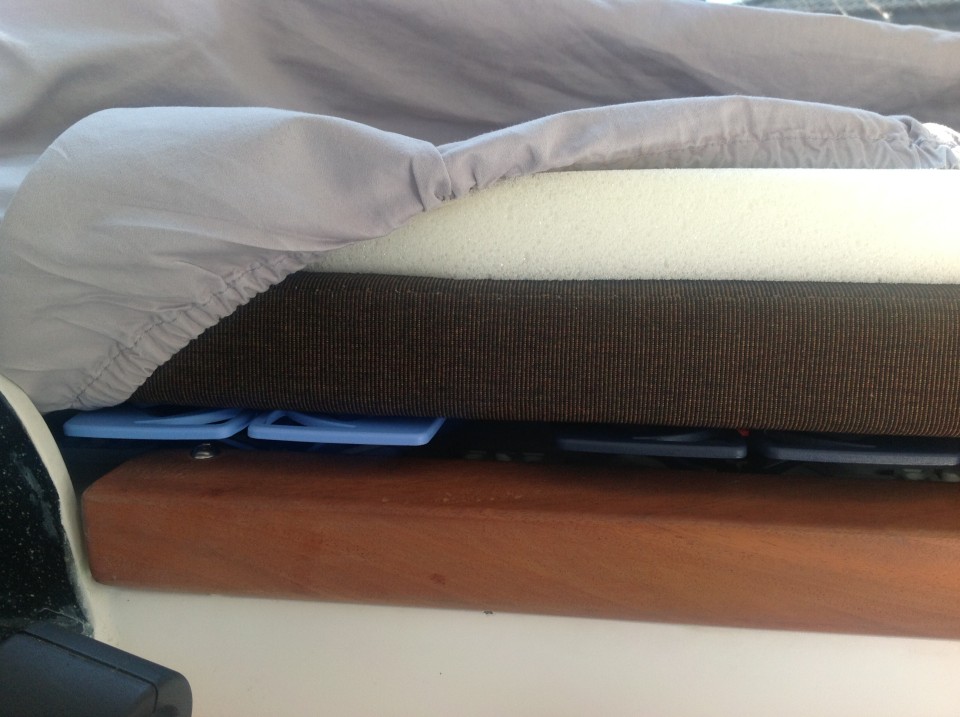
Here you can see the layers of our mattress. The Froli is at the bottom, the XPCamper pad in the middle, and the memory foam topper on top.
We have a king-sized down comforter named “Big Red” that we bought years ago at Ikea. This has proven to be more than enough to keep us warm even in the coldest weather we’ve experienced. We also have a thin king-sized fleece blanket (“deep purple”) that we use in warmer temperatures.














